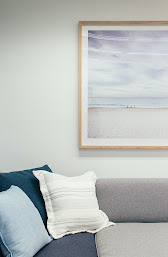How To Clean Fabric Sofa? Step by Step Guide For Fabric Sofa Cleaning
Hi there, cleaning the sofa sets may be a tough task sometimes. Don't worry just keep reading for step by step guide.
Step 1: Remove any cushions and pillows. If you cannot remove the pillow covers, then turn the cushion over to allow access to the entire padding underneath.
In addition to the cushions being a dust trap for all matter of particles that can make your allergies worse, mould spores and dust mites can become trapped under their cover as well. Over time these mould spores will grow and begin causing allergy symptoms on their own from direct exposure. It is recommended that you vacuum or wash them if they are machine washable, but some fabrics require dry cleaning only so check before attempting this step yourself.
Step 2: Vacuum both sides of cushions using upholstery attachment with beater bar set on low.
When vacuuming the cushions, move the beater bar along the seams and edges to remove any dust that has settled in them from being handled by multiple people throughout its life. It is essential for you to get all couch pillows deep cleaned regularly so that no mould can grow under their covers or inside of them as well. Then wash your pillows frequently so that they always clean and fresh smell. If you do not want to wash them then at least shake them out often or even vacuum both sides with a crevice tool attachment to remove any particles from getting caught in their material causing odour problems.
Step 3: Use a wet/dry vacuum cleaner. You can use these kinds of machines to suck up any dirt and debris that is left or you can use them to clean out the fabric of your couch. For this step, you will want to vacuum between the cushion seams where all the dust and crumbs collect. Be careful not to let water from the vacuum get onto any of your cushions as this can cause discolouration, mildew growth and even a mildew smell if it remains damp when it comes into contact with the cushion material.
Step 4: Once you have removed all major particles from vacuuming yourself, then it’s time for a professional deep cleaning service. A professional cleaner has access to stronger chemicals than what you can buy in home stores which gives them an advantage in killing mould spores, bugs and other contaminants that may be trapped within the fabric itself. The types of cleaning products used by professionals are also more effective than what you are likely to find in your local hardware or even grocery store.
Step 5: Once all of this has been completed, now is the time that you want to clean out all the dust and dirt from your couch cushion covers, armrests, drapes and other soft pieces of furniture that have gotten dirty over time. You can do this by using a vacuum cleaner as previously described or by spot cleaning with soap and water if you don’t feel like going through the trouble of running everything else for only a few inches of fabric covering on top. Whatever you choose to do as far as cleaning goes, make sure that covers are completely clean and then dry before putting them back on to avoid getting them wet and causing mildew growth.
Step 6: You can also get a professional upholstery cleaning service if you want, but this will cost more than simply washing your covers yourself in the washer. This is a good option for year-round allergy relief however because it keeps all dust mites and moulds spores at bay where they cannot come into contact with you or your family. Consider using double-sided tape on cushions for added protection from fabric mite contamination as well. This type of tape does not leave any residue behind once it has been removed which makes a permanent fix for those who do not want to be bothered by this problem in their home again. It’s best to use double-sided tape specifically designed for fabric mites and not just regular duct tape, which leaves behind glue residue.

Join the conversation